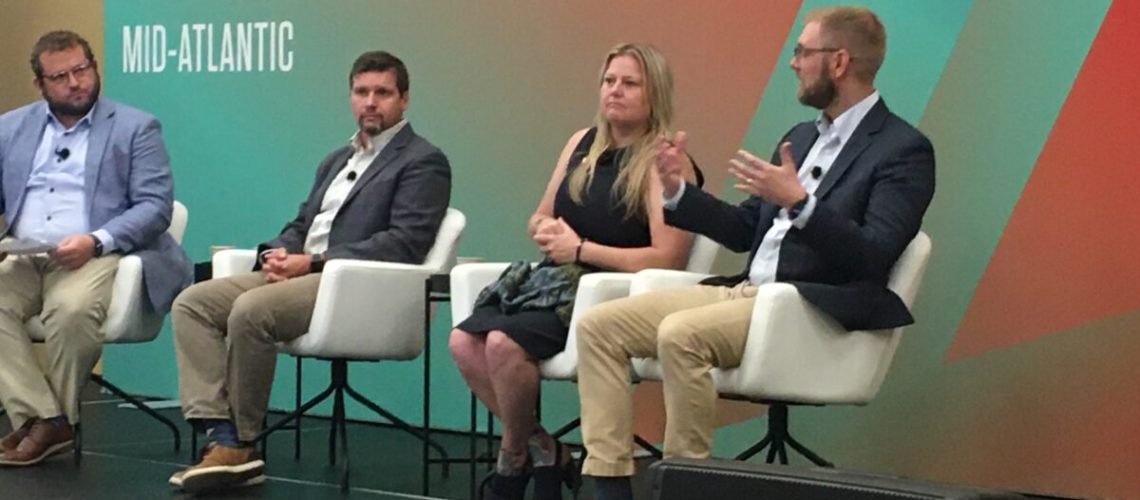RE+ Mid-Atlantic solar conference panel: While developers prefer greenfield projects, state regulators target other project sites.
A panel discussion on community solar at the RE+ Mid-Atlantic solar and energy storage conference in Philadelphia made the point that developers many have to embrace opportunities close to the intended customer, even in difficult terrain.
While state regulators design programs to encourage solar development on rooftops and brownfields of urban New Jersey, developers often prefer to build projects on undeveloped greenfield sites. Leslie Elder, vice president of policy and public affairs at Summit Ridge Energy, a Virginia-based solar developer, said that companies don’t always agree with state priorities, but that’s where the project opportunities are.
New Jersey’s Solar Act of 2012 includes provisions for streamlining and permitting and providing financial incentives for developers to construct utility-scale solar projects “located on a brownfield, on an area of historic fill or on a properly closed sanitary landfill facility.” The idea was to turn urban lots, commercial flat roofs and fallow industrial areas into productive sites for clean energy.
Greenfield sites, such as unused agricultural land or other undeveloped properties, generally are easier to deploy solar on and have required less specialized site preparation procedures than brownfields. However, the New Jersey BPU restricts grid-connected projects of 5 MW or larger on many categories of greenfield-type land. Waivers may be applied for but are often rejected.
“There is a real opposition from the state [New Jersey] for a wide variety of reasons to greenfield development, mostly because of population size and past sparring,” Elder said, adding that New Jersey’s community solar policy focus is on urban development and low-income beneficiaries.
Elder contrasted New Jersey’s approach to community solar with Maryland, which defined “buckets” for different types of projects. For example, there was a greenfield bucket; a brownfield bucket, landfills and “cleanfields” (landfills with no toxicity); and a low- and moderate-income bucket. These sorts of definitions for community solar opportunities enabled developers to bid on projects based on their experience, specialization and preferences.
State siting requirements are just one aspect of the community solar puzzle. More intractable, perhaps, are the labyrinthine subscription and billing policies needed to attract customers and have them see real economic benefits. And, as always, developers committing to building community solar projects need to see the financial rewards for doing so.
Eric Wallace, an attorney at the Virginia-based firm of GreeneHurlocker, PLC, with a focus on energy law and energy regulation, said successful community solar program design hangs on the statutes that set them up on a state-by-state basis.
“There are a lot of different policy tools out there, but finding the right solutions for each state is a challenge,” Wallace said. “In each of these markets there are interconnection proceedings and discussions happening. That’s definitely a key component of community solar in the Mid-Atlantic.”
Justin Felt, director of policy analysis and development at Exelon, which is parent to six utilities, said it would be beneficial to incorporate the utility perspective at the association level rather than making that the opposition view.
“Getting sort of that collaboration I think would be better,” Felt said, echoing comments made by SEIA CEO Abigail Ross Hopper earlier that morning. “Let’s also be honest, politics – purple state versus blue state – is going to be a big impact on this. If you’re in a red state, maybe it’s a little bit different. So, we have to follow our jurisdictions in a lot of ways. You have to appreciate that the broader political and policy landscape is going to be a prime driver as well.”
If state policies are important for developing grid storage capacity, as was discussed in an earlier RE+ panel, they are likely even more so for community solar, which is arguably more complicated a proposition.



